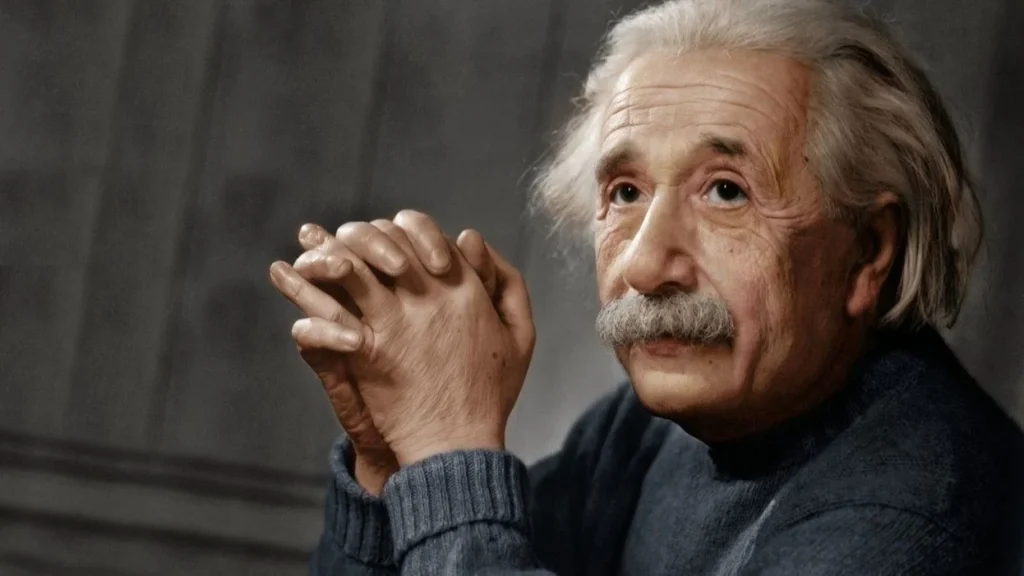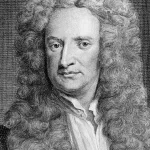His personal life, however, was marked by a series of challenges and triumphs. Einstein struggled with academic institutions early in his career, facing difficulty in securing a teaching position despite his brilliance. This period of uncertainty eventually gave way to a professorship in Zurich and later Berlin, where he continued to refine his ideas and mentor a new generation of physicists.
Einstein’s later years were spent in the United States, where he fled in 1933 to escape the rise of Nazi Germany. There, he joined the Institute for Advanced Study in Princeton, New Jersey, and became a vocal advocate for civil rights and international cooperation. His letters and essays on pacifism, freedom, and societal issues reflected his deep-seated belief in the power of knowledge and reason to shape a better world.
In summary, Albert Einstein’s legacy extends far beyond his scientific achievements. His curiosity, creativity, and resilience continue to inspire generations of scientists and thinkers worldwide. From the Theory of Relativity to his humanitarian ideals, Einstein’s contributions remain fundamental to our understanding of the universe and our place within it.
Unraveling Albert Einstein: The Man Behind the Theory of Relativity
Einstein’s journey into the realm of physics began with his deep-seated interest in the fundamental workings of nature. His early career saw him working as a patent examiner in Bern, Switzerland, where he dedicated his free time to pondering the complexities of space, time, and energy. It was during this period, in 1905, that Einstein published his revolutionary paper on the photoelectric effect, which would later earn him the Nobel Prize in Physics.
However, Einstein’s most enduring legacy lies in his theory of relativity, first published in 1905 as the Special Theory of Relativity. This theory fundamentally transformed our understanding of space and time, proposing that they are not absolute but rather intertwined dimensions that are affected by the presence of mass and energy. Einstein’s equation, E=mc², encapsulates the equivalence of mass and energy, demonstrating the profound interconnection between matter and light.
The General Theory of Relativity, published by Einstein in 1915, extended these concepts to include gravity as a curvature of spacetime caused by mass. This theory provided a new framework for understanding gravitation, offering predictions that have been confirmed through decades of experimental observation.
Beyond his scientific achievements, Einstein’s persona captured the imagination of the public. His disheveled appearance, paired with a sharp wit and unrelenting curiosity, made him a cultural icon. Einstein’s views on pacifism, civil rights, and global cooperation underscored his belief in the power of intellect to shape a better world.
Albert Einstein’s contributions to science and humanity remain unparalleled. His theories continue to inspire new generations of physicists and thinkers, challenging us to unravel the mysteries of the cosmos and embrace the limitless potential of human intellect.
From Physics to Fame: Einstein’s Journey to the Nobel Prize
Albert Einstein, renowned for his groundbreaking theories in physics, embarked on a remarkable journey that ultimately led to one of the highest honors in science—the Nobel Prize. Born in Germany in 1879, Einstein showed early signs of his exceptional intellect and curiosity for the natural world. His theories, including the theory of relativity, reshaped our understanding of space, time, and energy.
Einstein’s path to the Nobel Prize was not without challenges. His work on the photoelectric effect in 1905, where he proposed that light could be understood as quanta of energy (later known as photons), laid the foundation for quantum mechanics. Despite its profound implications, this work initially faced skepticism from some physicists who favored other interpretations.
It was not until 1921 that Einstein was awarded the Nobel Prize in Physics, primarily for his explanation of the photoelectric effect. This recognition cemented his status as a scientific luminary. However, the journey to this accolade was marked by both scientific triumphs and personal struggles.
Throughout his career, Einstein’s work continued to push the boundaries of theoretical physics. His theory of general relativity, published in 1915, revolutionized our understanding of gravity by describing it as a curvature of spacetime caused by mass and energy. This theory, confirmed through subsequent observations such as the bending of light around massive objects, further solidified Einstein’s reputation as a visionary scientist.
Beyond his scientific contributions, Einstein’s fame extended to his outspoken views on social and political issues. His advocacy for pacifism and civil rights made him a global figure, admired not only for his intellect but also for his moral courage.
Einstein’s Theory of Relativity Demystified: Impact on Modern Science
At its core, the Theory of Relativity comprises two major pillars: Special Relativity and General Relativity. Special Relativity, unveiled in 1905, revolutionized the notions of space and time by asserting that they are intertwined into a single continuum known as spacetime. Einstein’s equation E=mc^2, perhaps the most famous formula in physics, emerged from this theory, demonstrating the equivalence of mass and energy and paving the way for advancements like nuclear energy.
General Relativity, introduced in 1915, extended these ideas to encompass gravity. Einstein proposed that massive objects warp the fabric of spacetime, causing gravity as a result. This concept provided a new understanding of celestial mechanics, explaining phenomena from the motion of planets to the bending of light around massive stars.
The impact of Einstein’s theories extends beyond astrophysics and cosmology. They have influenced fields as diverse as technology, philosophy, and even popular culture. Concepts such as time dilation, where time moves slower in stronger gravitational fields, have been experimentally verified and find practical applications in GPS satellites.
Moreover, Einstein’s work continues to inspire new avenues of research, such as the search for a unified theory of physics that reconciles quantum mechanics with gravity. His ideas challenge us to rethink fundamental principles and explore the very nature of existence itself.
Einstein’s Theory of Relativity stands as a cornerstone of modern science, reshaping our perception of the universe and laying the foundation for countless technological advancements. Its profound impact ensures that Einstein remains a towering figure in the history of human knowledge, forever altering the way we perceive reality.
Beyond the Blackboard: Einstein’s Personal Life and Family Dynamics
Albert Einstein, renowned for his groundbreaking theories in physics, also had a deeply intriguing personal life that often went beyond the confines of scientific inquiry. Beyond the blackboard where he formulated the theory of relativity and reshaped our understanding of the universe, Einstein’s family dynamics and personal journey offer a fascinating glimpse into the man behind the genius.
Born in 1879 in Ulm, Germany, Einstein showed early signs of his intellectual curiosity and rebellious spirit. His unconventional thinking extended beyond science into his personal relationships. Einstein’s first marriage to Mileva Marić, a fellow physicist, was marked by both intellectual collaboration and personal challenges. They had two sons together, Hans Albert and Eduard, amidst the backdrop of Einstein’s burgeoning career.
Despite his acclaim in the scientific community, Einstein’s personal life was not without complexities. His divorce from Mileva in 1919 preceded his remarriage to his cousin, Elsa Löwenthal, whom he had known since childhood. Elsa provided Einstein with emotional support and a stable family life as he navigated the challenges of fame and his role in shaping the scientific discourse of the early 20th century.
Beyond his immediate family circle, Einstein’s broader relationships with colleagues and friends shed light on his multifaceted personality. He was known for his wit, charm, and occasional bouts of introspection, which often contrasted with his public image as a serious scientist.
In essence, Einstein’s personal life was as dynamic and thought-provoking as his theories. It invites us to ponder not only his scientific legacy but also the human experiences that shaped his worldview. Beyond the equations and academic accolades, Einstein’s journey through family dynamics and personal challenges remains an enduring part of his legacy, reminding us that brilliance often exists beyond the confines of the blackboard.
This article encapsulates Einstein’s personal life and family dynamics in a conversational tone, engaging the reader with insights into the scientist’s lesser-known aspects.
Einstein’s Legacy: How His Theories Shape Modern Physics
Albert Einstein, a name synonymous with genius and revolutionary thinking, left an indelible mark on the landscape of modern physics. His theories, formulated over a century ago, continue to be the bedrock of our understanding of the universe. From the theory of relativity to the concept of the photoelectric effect, Einstein’s contributions were not just groundbreaking but paradigm-shifting.
One of Einstein’s most famous achievements is the theory of relativity, which comprises both special and general relativity. Special relativity, published in 1905, fundamentally altered our understanding of space and time. It proposed that the laws of physics are the same for all non-accelerating observers and that the speed of light in a vacuum is constant, irrespective of the observer’s motion. This theory laid the groundwork for concepts like time dilation and the famous equation E=mc², which demonstrates the equivalence of mass and energy.
General relativity, introduced by Einstein in 1915, expanded upon special relativity by incorporating gravity into the fabric of spacetime. It describes how massive objects distort the geometry of space and time, giving rise to what we perceive as gravity. General relativity has been crucial in predicting phenomena such as black holes, gravitational waves, and the bending of light around massive objects.
Beyond relativity, Einstein’s work on the photoelectric effect earned him the Nobel Prize in Physics in 1921. This phenomenon, where electrons are emitted from a material when it absorbs light of a certain frequency, provided empirical evidence for the quantization of light and contributed to the development of quantum mechanics.
Einstein’s influence extends far beyond his theoretical contributions. His insistence on rigorous experimentation and the pursuit of simplicity in explanations paved the way for a new era in physics. His ability to blend theoretical insight with practical experimentation continues to inspire generations of scientists.
The Mind of Einstein: Philosophy and Reflections on Science
At the heart of Einstein’s philosophy was a relentless curiosity about the universe. He saw science as a quest to uncover the underlying principles that govern nature’s workings, akin to unraveling a grand cosmic puzzle. This perspective led him to develop groundbreaking ideas that challenged existing paradigms and expanded the frontiers of human knowledge.
Einstein’s reflections on science were rooted in a belief that simplicity and elegance lie at the core of understanding. He famously remarked, “Everything should be made as simple as possible, but not simpler.” This principle guided his scientific inquiries, pushing him to seek unifying principles that could explain complex phenomena in concise terms.
Moreover, Einstein’s philosophy extended beyond the realm of physics. He pondered deeply on the nature of reality, consciousness, and the interconnectedness of all things. His musings often crossed into metaphysical territory, questioning the boundaries between space, time, and the human experience.
In essence, Einstein’s mind was a nexus of scientific rigor and philosophical contemplation. His legacy continues to inspire generations of scientists and thinkers to approach knowledge with curiosity, humility, and a quest for deeper understanding. As we reflect on his contributions, we are reminded that true insight often emerges from the intersection of disciplined inquiry and imaginative exploration.
Einstein’s Nobel Prize: Why His Contributions Transformed Physics
Albert Einstein’s Nobel Prize win in 1921 marked a pivotal moment in the history of science, validating his groundbreaking contributions to physics. His theories, particularly those on the photoelectric effect, laid the foundation for quantum mechanics and fundamentally altered our understanding of light and matter interaction.
Before Einstein’s work, the prevailing view of light was as a wave. However, his explanation of the photoelectric effect proposed that light could also behave as discrete packets of energy, or photons. This insight not only explained experimental results that puzzled scientists but also revolutionized the field of physics by providing a new framework for understanding the dual nature of light.
Beyond the photoelectric effect, Einstein’s theory of relativity transformed our understanding of space, time, and gravity. The special theory of relativity, published in 1905, introduced concepts like time dilation and the equivalence of mass and energy (E=mc²), challenging Newtonian mechanics and paving the way for modern physics.
Moreover, Einstein’s general theory of relativity, published in 1915, redefined our understanding of gravity as the curvature of spacetime by matter and energy. This theory predicted phenomena like gravitational waves, later confirmed by experiments in the 21st century, further solidifying Einstein’s legacy as a visionary physicist.
Einstein’s contributions were not merely theoretical but had profound implications for technology and everyday life. His work laid the groundwork for technologies such as lasers and semiconductors, which are integral to modern electronics and communications.
Einstein’s Nobel Prize was a recognition of his transformative impact on physics. His theories challenged existing paradigms, expanded the frontiers of human knowledge, and continue to inspire generations of scientists. Einstein’s ability to blend rigorous scientific inquiry with profound intuition remains a testament to the power of human intellect and curiosity in unlocking the mysteries of the universe.
Frequently Asked Questions
What were Albert Einstein’s philosophical and political views?
Discover Albert Einstein’s philosophical and political views in this concise FAQ. Gain insights into Einstein’s perspectives on pacifism, socialism, and humanism, reflecting his advocacy for global peace and social justice. Explore how his beliefs influenced his scientific work and legacy.
Can you tell me about Albert Einstein’s personal life and family?
Discover Albert Einstein’s personal life and family through a concise overview covering his relationships, family members, and notable aspects of his personal history.
What is the Theory of Relativity and why is it significant?
A concise explanation of the Theory of Relativity, detailing its significance in physics. It describes how gravity works in relation to time and space, leading to revolutionary insights such as the equivalence of mass and energy (E=mc^2) and predictions like gravitational lensing.
How did Albert Einstein win the Nobel Prize and for what work?
Albert Einstein was awarded the Nobel Prize in Physics in 1921 for his discovery of the photoelectric effect, which proved that light could be described as quanta of energy, known as photons. This breakthrough laid the foundation for quantum theory.
What were Albert Einstein’s major contributions to science?
Explore Albert Einstein’s major contributions to science, including his groundbreaking theories of relativity, which revolutionized our understanding of space, time, and gravity. Einstein also made significant contributions to quantum mechanics and theoretical physics, laying the foundation for modern physics and shaping scientific thought in the 20th century.



